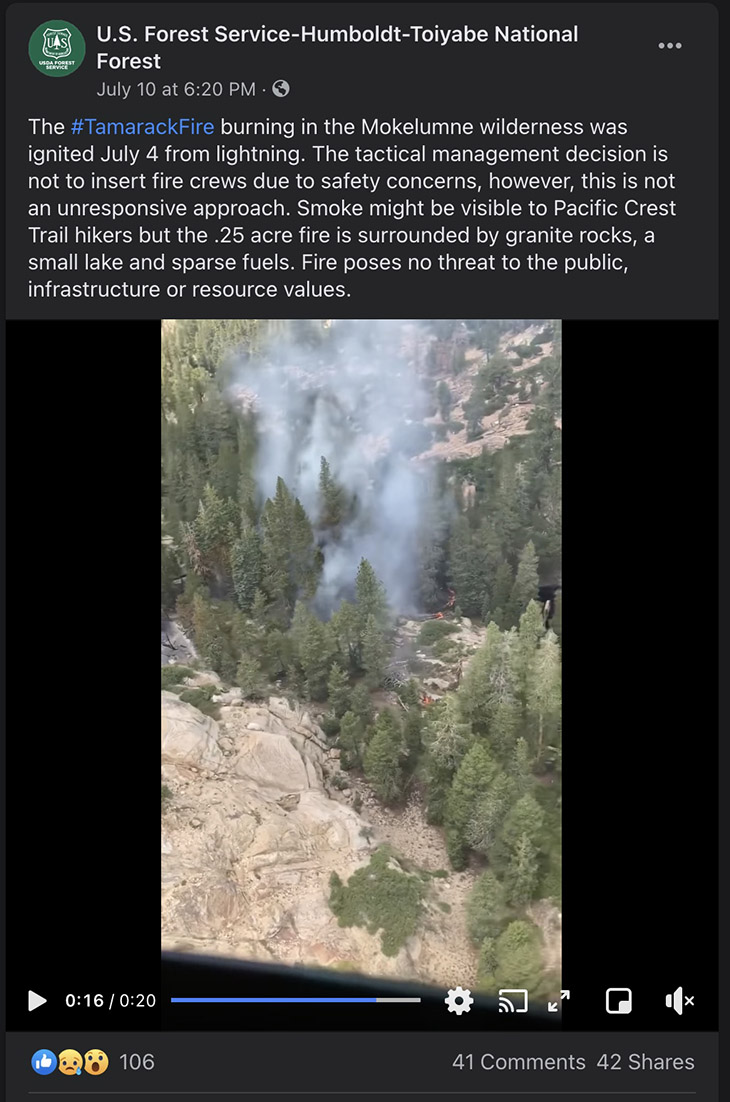9:35 a.m. PDT July 24, 2021

The Dixie Fire, six air miles south of Chester, California, was very active Friday, but not as much as on Thursday due to a decrease in wind speeds. While it still created convection columns of smoke topped by white pyrocumulus clouds, they were not as large and the fire did not increase in size as much as in previous days, but it still grew by tens of thousands of acres, expanding to 181,289 acres by Saturday morning.
The east side near Caribou, Twain, and Paxton, as well as the nearby Fly Fire at Kiddie, spread one to two miles further east. The Fly Fire is a new fire that started Thursday.
To see all articles on Wildfire Today about the Dixie Fire, including the most recent, click HERE.
Wednesday night firefighters began a firing operation north of the fire to create a burned area south of Lake Almanor intended to stop the northward progress of the fire. They are working from a road system south of and parallel with Highway 89, starting from Canyondam working west and then plan to circle around the northwest side of the fire toward Butte Meadows. The prescription for the firing calls for it to be done at night, conditions that make it easier for firefighters to control the fire intensity. This is similar to conducting a prescribed fire. By early Saturday morning crews had initiated firing along approximately nine miles of roads, working toward the west-northwest. The project can be seen on the map above, appearing as a strip of white lines south of Highway 89.

The fire has been split into two zones organizationally, East and West, each with its own Incident Management Team.
The weather forecast for Saturday calls for warmer and drier conditions with relative humidities in the upper single digits and temperatures ranging from 80 to 100 degrees depending on the elevation. Wind speeds will be in the 10 to 15 mph range. The very low humidity, high temperatures, and wind, combined with the very low fuel moistures will present difficult conditions for firefighters.
4:56 p.m. PDT July 23, 2021

The 143,000-acre Dixie Fire south of Chester, California was extremely active Friday afternoon, at times creating multiple smoke columns topped with pyrocumulus clouds. The growth on Thursday and Friday has been described as explosive.
The fire is being fought by 70 hand crews, 355 engines, and 31 helicopters for a total of 4,005 personnel.

Thursday evening the Dixie Fire was 6 air miles south of Chester, 14 miles northeast of Paradise, and 25 miles northeast of Oroville. A new fire nearby, the Fly Fire, was 4 miles north of Quincy.

Evacuations are occurring in three counties, Butte, Plumas, and Tehama. Evacuation notices for Butte and Pluma are posted at a website maintained by the counties. Tehama also recently established a similar service.
Below is a summary of the evacuation notices published by Plumas County at 1 p.m. PDT July 23, 2021. Keep in mind it is a very dynamic situation and changes occur frequently.
#DixieFire. Summary of Evacuations from Plumas County Sheriff’s Office. pic.twitter.com/ver49IkTP9
— Lassen NF (@LassenNF) July 23, 2021















